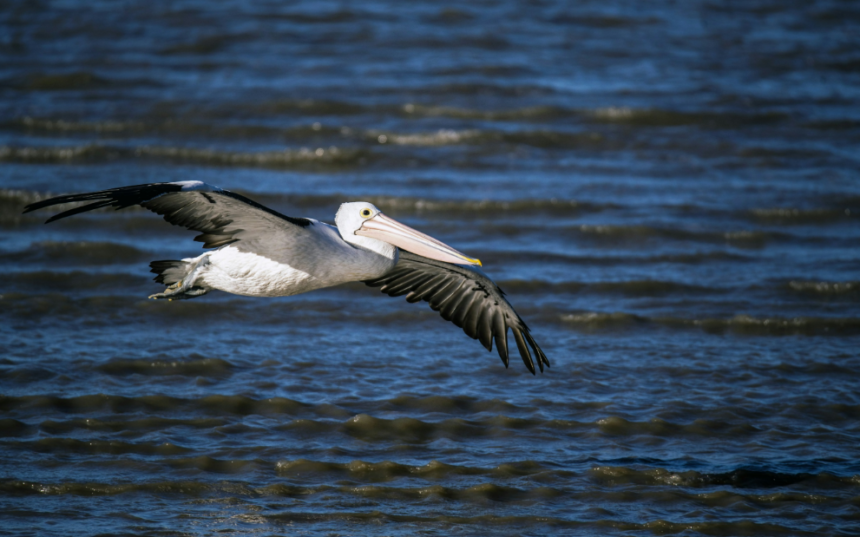Introduction to Pelicans
Pelicans are some of the most fascinating birds in the wild. Their impressive wingspans and striking appearance capture the attention of bird watchers and nature lovers alike. These magnificent creatures glide gracefully over coastal waters, showcasing their unique hunting techniques that have evolved over millions of years. But what truly sets pelicans apart is their diet.
Understanding what pelicans eat in the wild gives us a deeper appreciation for these remarkable birds and their role in maintaining healthy ecosystems. From fish to crustaceans, each meal contributes to their survival and well-being. Join us as we dive into the captivating world of pelican feeding habits, explore their anatomical features that aid in capturing prey, and learn how these beautiful birds interact with nature and human environments. The journey to understanding these avian wonders starts now.
Anatomy and Characteristics of Pelicans
Pelicans are remarkable birds known for their distinctive appearance. One of their most striking features is their large, elongated bills, which are capable of holding significant amounts of water and fish.
They possess a unique throat pouch that aids in catching prey. This adaptation allows them to scoop up fish efficiently while filtering out excess water.
With long wingspans averaging 6 to 9 feet, pelicans are powerful flyers. They can glide gracefully over the wawater’susurfawater’snningor food below.
Their webbed feet make them excellent swimmers. These adaptations help them navigate through various aquatic environments with ease.
The plumage varies among species but is often white or greyish, contrasting with darker wing feathers. The vibrant colours during mating season add to their beauty and allure in the wild.
Pelicans also have keen eyesight, allowing them to spot potential meals from great distances.
Diet Composition of Pelicans
Pelicans are opportunistic feeders, and their diet primarily consists of fish. They tend to favour schools of smaller fish, which are easier to catch.
However, the menu can vary significantly based on their habitat and what is readily available. Some pelican species also consume crustaceans, amphibians, and even small birds when fish is scarce.
Their unique physical adaptations enhance their feeding efficiency. The large bill acts like a scoop, allowing them to catch multiple fish simultaneously while diving into the water or gliding near its surface.
Seasonal changes also influence dietary preferences. They may adapt during breeding seasons in specific regions by including more protein-rich food sources for raising their young.
This varied diet helps pelicans thrive in diverse ecosystems, from coastal areas to freshwater lakes. Understanding these eating habits provides insight into how they interact with their environment.
Types of Prey Consumed by Pelicans
Pelicans are skilled hunters who primarily feed on fish. Their diet consists of various species, including small schools of minnows and larger fish like mullet or catfish.
In addition to fish, pelicans also consume crustaceans. Shrimp and crabs make up a significant portion of their meals in coastal areas. This adaptability allows them to thrive in different environments.
You might see pelicans diving into the water with precision during feeding frenzies. They can spot prey from great heights before making their dramatic plunge.
They may even snack on amphibians or small birds when other food sources are scarce. This diverse menu showcases their ability to exploit available resources effectively.
Feeding Habits and Techniques of Pelicans
Pelicans are fascinating creatures, especially when it comes to their feeding habits. These birds have evolved specialized techniques that make them highly effective hunters.
One of the most remarkable methods is their unique diving style. Pelicans often plunge into the water from heights, using gravity to help snag fish in their large bills. This dynamic action showcases both skill and precision.
Another common technique involves cooperative hunting. Pelicans sometimes work together in groups, driving schools of fish toward shallow waters where they can easily scoop up their prey.
Their expansive throat pouches play a crucial role during feeding. After catching a fish, pelicans drain excess water before swallowing it whole—an impressive feat for such large birds.
These strategies highlight pelicans’ adaptability and illustrate how vital teamwork and instinct are to their survival in the wild.
Impact of Diet on Pelican Behavior and Lifestyle
The diet of pelicans significantly influences their behaviour and lifestyle. These birds are known for their unique feeding techniques, which vary depending on availability. When fish are abundant, pelicans congregate in large groups, showcasing social behaviours that strengthen bonds within colonies.
Hunting strategies also adapt based on prey type. Some species dive or plunge into the water to catch fish, while others may use cooperative hunting tactics. This adaptability is essential for survival in varying environmental conditions.
Moreover, the nutritional quality of their diet affects breeding and parenting behaviours. A well-fed female will produce healthier eggs and raise stronger chicks. Conversely, scarcity can lead to stress and competition among individuals.
Seasonal changes in prey availability trigger migrations as pelicans search for richer feeding grounds. Their ability to adjust feeding habits is crucial in sustaining these magnificent birds throughout their lives.
Human Interaction and Conservation Efforts for Pelicans
Human interaction with pelicans has significantly shaped their habitats and behaviours. Coastal developments and pollution have impacted nesting sites, making conservation efforts crucial.
Many organizations are dedicated to protecting these remarkable birds. They focus on habitat restoration, ensuring pelicans have safe places to breed and forage. Educating the public about the importance of preserving wetlands is a vital part of this work.
Furthermore, legislation aimed at safeguarding pelican populations helps regulate fishing practices that could harm their food supply. Community involvement is key in fostering awareness about responsible fishing and environmental stewardship.
Volunteer programs often engage local residents in monitoring pelican nests or participating in clean-up events along shorelines. Every small effort contributes to a healthier ecosystem for wildlife and people, highlighting the intrinsic connection between humans and nature ‘creation: The Essential Role of Diet in the Wild Pelicans.
PePelicans’iet play a crucial role in their survival and overall well-being. Their specialized feeding techniques and distinctive anatomy allow these birds to thrive in various aquatic environments. Pelicans ensure they meet their nutritional needs by consuming a diverse range of prey, including fish and crustaceans.
Their behaviour is closely linked to the availability of food sources. Changes in the ecosystem can affect where and how they hunt. This adaptability showcases the importance of diet for physical health and maintaining social structures within pelican colonies.
As human activity continues to impact natural habitats, conservation efforts are vital for preserving pelicans and their food sources. Protecting wetlands and ensuring healthy aquatic ecosystems will support these magnificent birds as they navigate the challenges posed by environmental changes.
Understanding what pelicans eat helps underscore the interconnectedness between wildlife and habitat health. By safeguarding their dietary needs, we sustain these incredible creatures long into the future.






